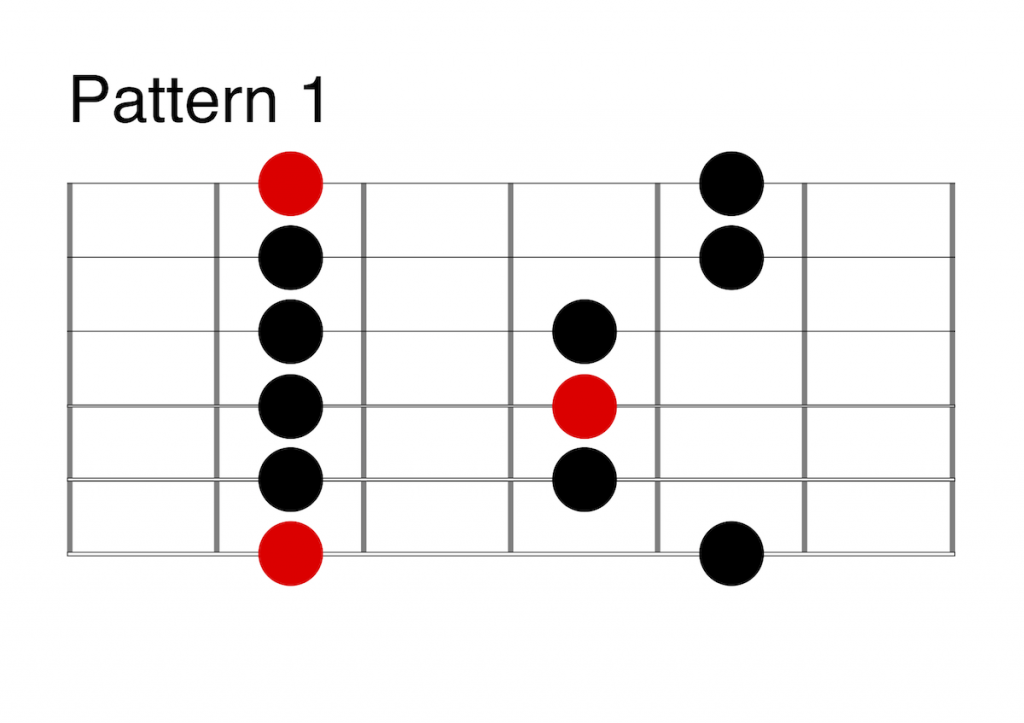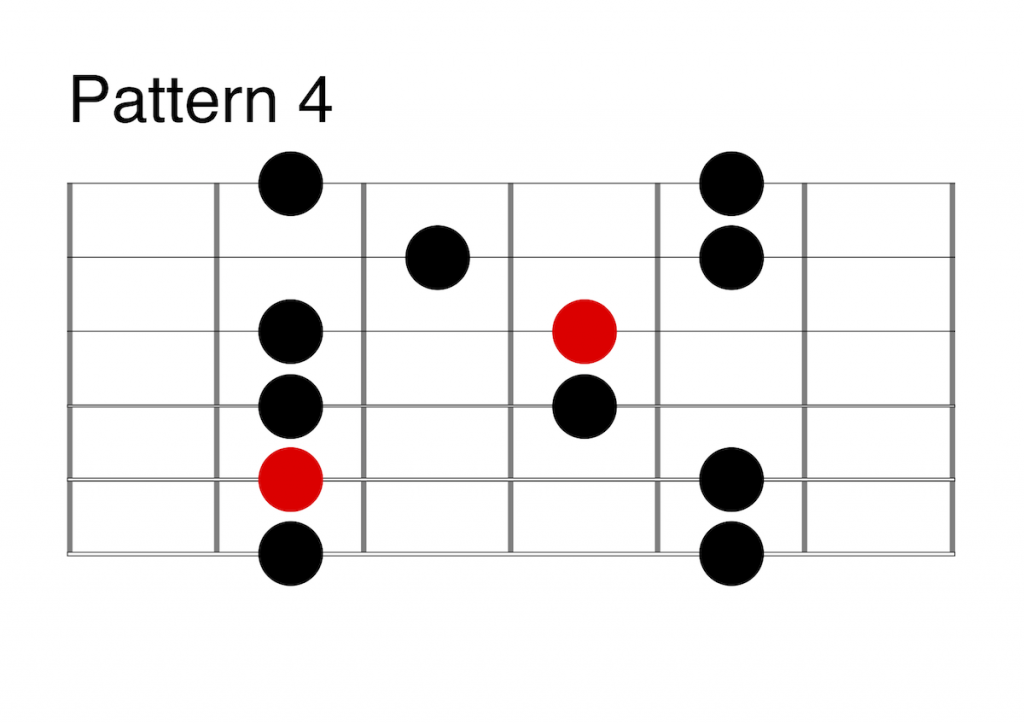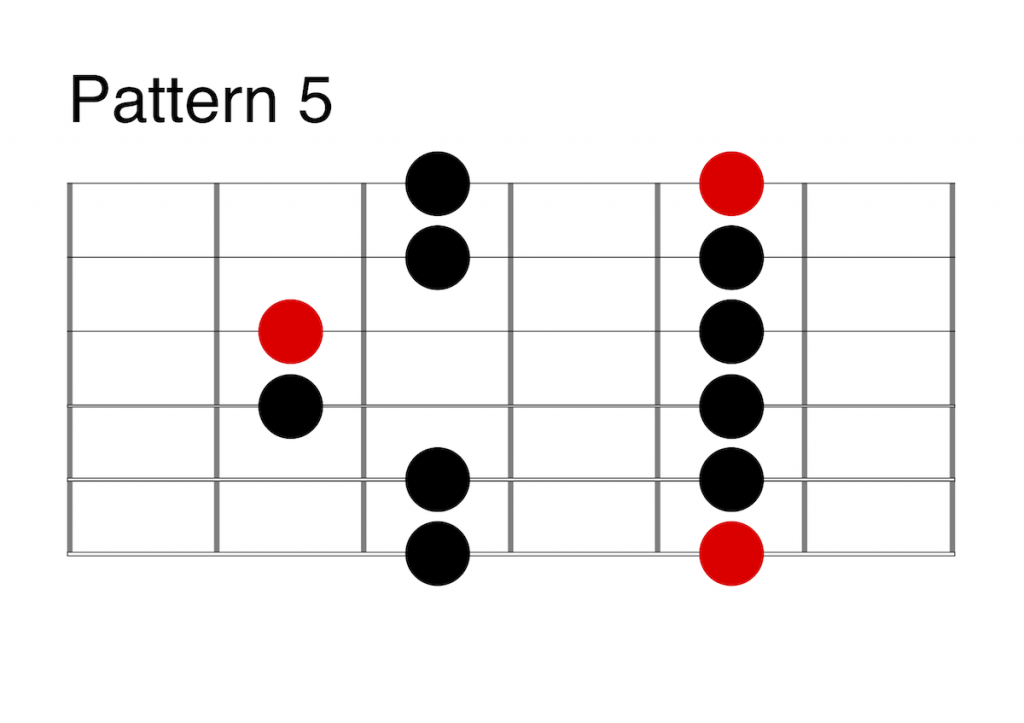Every guitarist needs to know the minor pentatonic scale. No matter what kind of music you’re into, this scale will come in useful. It’s always been at the heart of most blues and rock soloing, whilst jazz players like to get all sophisticated by superimposing the scale over various chords for all kinds of interesting sounds. In this series of lessons I’m going to look at a bit of the theory behind the scale, show you the most common ways to play it on the guitar.
A little bit of theory…
As the name would suggest, the minor pentatonic scale contains 5 notes: ‘pent’ means 5 and ‘tonic’ just means note. This, and every, scale can be thought of in terms of a formula that shows how the scale can be derived from the notes of the major scale which is the reference point for most things music theory related. The formula for the minor pentatonic scale is 1 b3 4 5 b7. So one way to construct the scale would be to take the major scale, grab the 1st, 3rd, 4th, 5th and 7th notes, and then flatten the 3rd and 7th notes. Like this:
C Major Scale: C D E F G A B
C Minor Pentatonic Scale: C Eb F G Bb
For these lessons we’ll be working with the A minor pentatonic scale which can be derived from the A major scale in a similar way:
A Major Scale: A B C# D E F# G#
A Minor Pentatonic Scale: A C D E G
Another way of arriving at the same notes would be to take the minor scale as a starting point and just grab the 1st, 3rd, 4th, 5th and 7th notes. This way the flattened 3rd and 7th are already occur naturally in the scale, so there’s no need to adjust:
A Minor Scale: A B C D E F G
A Minor Pentatonic Scale: A C D E G
The Must-Know Minor Pentatonic Scale Pattern
If you only ever learn one scale on the guitar…

Breaking Out Of The Box
Wonderful though the above scale pattern is, eventually it becomes frustrating and limiting to always be trapped in that little four fret area. One solution is to extend out basic scale pattern a little bit lower and a little bit higher to create a nice diagonal shape that falls really naturally under the fingers.
Here’s the pattern with the shift or slide on the G string, up into the higher box shape:


The flash rock lick that I play in the video goes like this:
All 5 Shapes of the Minor Pentatonic Scale
Some players find all they all they need in the above patterns of the scale shapes, but eventually it’s nice to be able to play the minor pentatonic scale all over the fretboard. The traditional way of doing this is to divide the fretboard up into 5 different zones and learn a pattern of the scale in each of these areas. As I stress in the video, it’s super important to practice these scales with an awareness of the root notes, as this is what will enable you to find and use these patterns in a musical situation.
I’ve written the 5 shapes out below, with a few comments about each. It’s very important to spend a bit of time playing around with each pattern, to discover the musical possibilities contained within. There are lots of options when it comes to fingering, so feel free to experiment.




